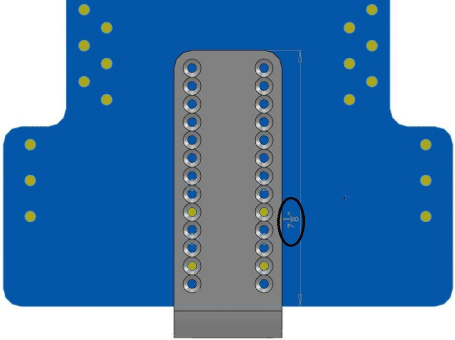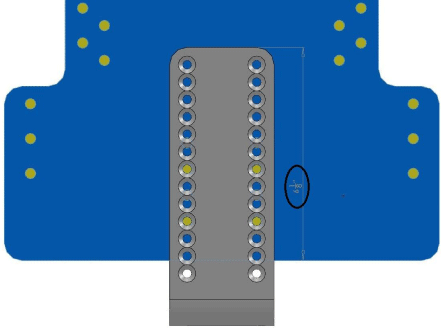
Special Article - Disability and Rehabilitation
Phys Med Rehabil Int. 2017; 4(6): 1135.
Let’s Hear It for the Humble Seat to Back Bracket
Andrew Brule*
Sunny Hill Health Centre for Children, 3644 Slocan St, Vancouver, BC, V5M 3E8, Canada
*Corresponding author: Andrew Brule, Sunny Hill Health Centre for Children, 3644 Slocan St, Vancouver, BC, V5M 3E8, Canada
Received: November 15, 2017; Accepted: November 27, 2017; Published: December 04, 2017
Editorial
I know this isn’t a sexy topic but let’s talk about the oft ignored seat to back bracket in seated positioning devices (Postural Control Systems, PCS). In my opinion, the design of the humble seat to back bracket is one of the most important and influential aspects of a postural control system, and yet we take it for granted. Like the tires on your car, so much depends on it. But just what does the seat to back bracket do in custom and commercial seating? In custom seating and some commercial seating systems, its main job is maintaining the seat back height relative to the seat and the seat length relative to the back. What is sometimes forgotten is it is also supposed to maintain the alignment of the seat with the back in both the frontal and transverse planes. Is this important? Actually these four functions are critical because all the positioning aspects of the PCS depend on these relationships; the trunk laterals, custom contoured positioning and/or comfort pads, headrest, strapping, etc… Pretty much everything depends on maintaining the relative position of the seat and back. In my opinion every positioning function of the PCS depends on the seat to back bracket doing these four jobs. The one thing the seat to back bracket on a PCS is usually never relied on to do is to maintain the seat to back angle. Why? They usually are not strong enough to do this and if they are built strong enough they would not be as useful and, at least in the special needs custom seating application, it is redundant because the primary job of maintaining the seat-to-back angle is usually given to other devices better suited to the task (i.e. wheelchair seat and back canes, hi-low bases, kitchen chair, etc..). So the question is, why ignore the seat-toback bracket? Well no longer. Looking at existing commercial seat to back brackets there are two “styles””, those with slots and those with a series of discrete holes at regular intervals, both of which allow for growth in back and seat height. Many may favour the slotted bracket for its infinite adjustment. I however do not, as I consider infinite adjustment unnecessary and the risk of not being able to maintain alignment of the seat and back in the frontal plane, especially when under torsion or being removed from the mobility aid is difficult with slots. The other option is discrete holes which prevent frontal plane rotation but only allows incremental growth, typically ½”, ¾” or 1”. Typically, the placement of the rows of T-nuts in the back and/or seat and the spacing of the holes in the seat-to-back bracket are identical. If the T-nuts are spaced at ¾” then the holes in the bracket are spaced at ¾”. But is ¾” or ½” enough adjustability? In my opinion, when it comes to incremental growth adjustment, less is more, especially in custom contoured seating systems or small seating systems. I propose a different pattern. If the seat to back bracket hole spacing was ½” and the t-nut spacing (in the seat and/or back) were ¾” and you had 2 columns and 4 rows of mounting holes(i.e. t-nuts) then you would be able to grow the seat or back in ¼” increments. Figures 1, 2, 3, 4 and 5 illustrate the ¼” incremental growth using this combination of t-nut spacing and seat-to-back bracket hole spacing. While ¼” incremental growth of the seat and back may not be necessary with large people, the smaller and more orthopedically challenged the person, the more important small incremental growth becomes.
The second issue, I would like to address is seat to back bracket width. Since you are usually not relying on the seat to back bracket to maintain the seat to back angle then why a 6” wide seat to back bracket? While wider seat to back brackets may not have any functional advantage over narrow ones they may present problems in other areas, namely the wider the seat to back bracket, the more likely it is to interfere with other hardware competing for space on the back or seat base (i.e. Pelvic Lateral brackets, Trunk Lateral Brackets, etc…). Therefore I propose a 3” wide seat to back bracket. In my opinion, any wider is unnecessary to meet the purpose of the seat to back bracket and you run the risk of interfering with other hardware which is mounting to the seat or back (i.e. trunk laterals and pelvic laterals). Any narrower and you run the risk of rotation in the Transverse Plane. One more thing, I propose a wall thickness of ¼”.

Figure 1: T-Nut Rows 1&3 with Height 7 1/8”.

Figure 2: T-Nut Rows 2&4 with Height 6 7/8”.


